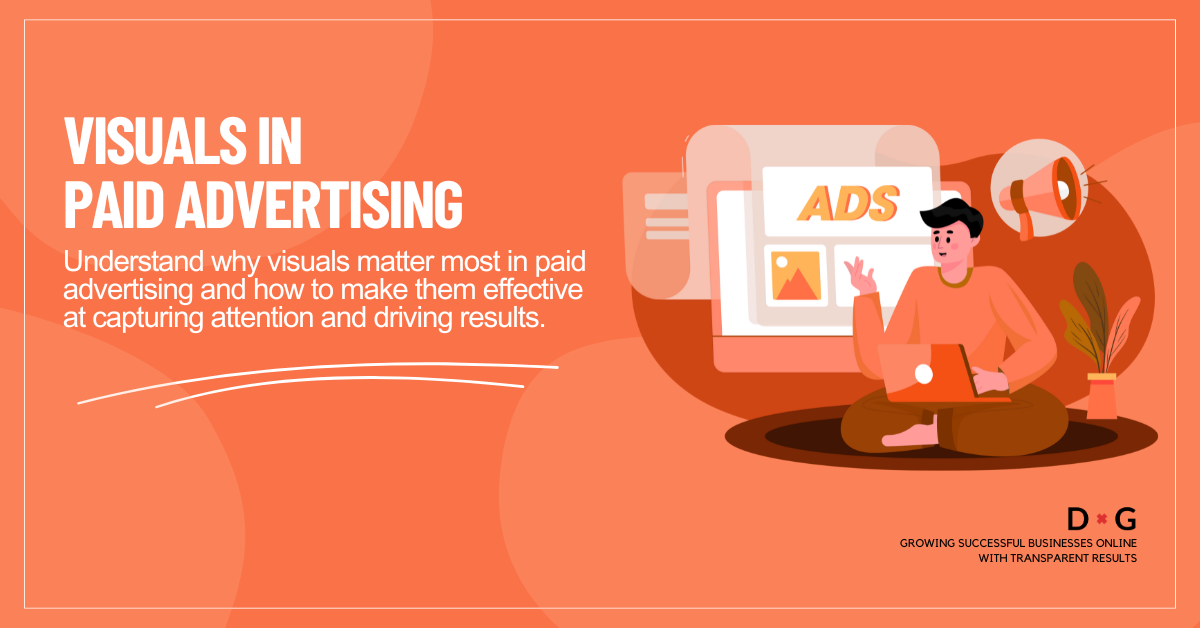
In today’s fast-paced digital landscape, the right visuals in paid advertising can be the deciding factor between being ignored and gaining a click. Whether it’s a bright image in a Facebook ad or a catchy graphic in a Google Display campaign, visuals play a big role in grabbing attention and quickly getting your message across. Especially in PPC advertising, where you only have seconds to make an impact, your creative needs to speak louder than words.
What Is Visual in Advertising?
Visuals in advertising are carefully chosen images, videos, colours, layouts, and branding elements designed to instantly convey your message. Visuals should do more than look nice; they should clearly communicate and convert.
View your images or videos as the headline of your ad. They’re the first thing your audience notices and often what they’ll remember most.
The Psychology Behind Visuals
People look at the image or video before they read the caption. Why? Because the brain processes visuals far quicker than text, they’re your best shot to catch your audience’s attention.
This means your visuals, or the images and videos, are your first and best chance to capture your target audience’s attention.
If your image or video doesn’t grab attention, the rest of your ad won’t even get a chance. Your audience decides in seconds:
- Can they understand what the offer is without reading?
- Does the creative highlight the key benefit right away?
- Is it visually interesting or relevant?
If you answered YES, then you’re headed in the right direction.
Visuals in PPC Advertising
In PPC advertising, where you pay for every click, your visual needs to do the heavy lifting.
Your visual must work instantly, it only has seconds to:
- Stop the scroll
- Deliver your message
- Build interest
- Trigger action
If someone can’t tell what you’re offering or why it matters within 3 seconds, it’s time to rethink your creative.
Your visual should clearly show what the ad is about before anyone reads a single word.
Why Your Creative Is the Message
In many cases, your visual is the message. The visual doesn’t just back up the ad copy; it takes the lead in conveying the message.
Here’s why:
- People don’t always read the ad copy, but they do see the images or videos you used.
- A strong visual can summarise your offer quickly.
- Draw attention to the one thing that makes your offer irresistible.
Ask yourself:
- Is the key value clear from the visual alone?
- Is the design clean, with one main focus?
- Would someone understand the offer even without text?
If yes, your ad is doing its job.
Key Elements of Effective Visual Ads
To make your visual in advertising stand out, include:
Instant Clarity
Make it easy to understand at a glance. What’s the offer?
Strong Hook
Hook them early by making your core message instantly clear.
Professional Look
Choose high-quality images, keep the design clean, and ensure your branding stays consistent.
Emotion or Action
Show people solving a problem or using your product.
Call to Action
Guiding users with clear visual CTAs, such as arrows or buttons, encourages engagement.
Tips for Creating Impactful Visual Ads
- Use bold colours and contrast to stand out.
- Keep it mobile-friendly most users are on phones.
- Test multiple images or videos to see what performs best.
- Use video or motion to draw attention.
- Think like you are your target audience: what would make you stop check, and read the ads?
Tip: If your creative doesn’t do the talking, your copy won’t even be read. The visual draws them in, setting the stage for the copy to convert.
How to Optimise Visuals for Better Ad Performance
To make your visuals work harder, follow these key tips:
A/B test different creatives
Test different images, videos, and formats to see what grabs attention.
Design for mobile first
Most ads are seen on mobile. Use simple layouts and large, readable text.
Use high-quality, fast-loading assets
Avoid blurry or slow-loading visuals. Quality builds trust and improves performance.
Keep refreshing creatives
Update your ads regularly to avoid fatigue and keep engagement high.
Check engagement metrics
Look at click-through rates, video watch time, and scroll depth to measure success.
Add clear visual CTAs
Use design elements like arrows, buttons, or contrast cues to guide user action.
Conclusion:
When it comes to visuals in paid advertising, let your creative do the talking. It’s not just about catching attention, it’s about telling your story instantly.
Your image or video is your best tool to stop the scroll, summarise your message, and spark interest, often before a single word is read.
So don’t treat visuals as an afterthought. Make your creative do the heavy lifting, and you’ll see stronger engagement, better performance, and more conversions.
